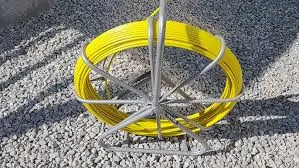
-
 Afrikaans
Afrikaans -
 Albanian
Albanian -
 Amharic
Amharic -
 Arabic
Arabic -
 Armenian
Armenian -
 Azerbaijani
Azerbaijani -
 Basque
Basque -
 Belarusian
Belarusian -
 Bengali
Bengali -
 Bosnian
Bosnian -
 Bulgarian
Bulgarian -
 Catalan
Catalan -
 Cebuano
Cebuano -
 Corsican
Corsican -
 Croatian
Croatian -
 Czech
Czech -
 Danish
Danish -
 Dutch
Dutch -
 English
English -
 Esperanto
Esperanto -
 Estonian
Estonian -
 Finnish
Finnish -
 French
French -
 Frisian
Frisian -
 Galician
Galician -
 Georgian
Georgian -
 German
German -
 Greek
Greek -
 Gujarati
Gujarati -
 Haitian Creole
Haitian Creole -
 hausa
hausa -
 hawaiian
hawaiian -
 Hebrew
Hebrew -
 Hindi
Hindi -
 Miao
Miao -
 Hungarian
Hungarian -
 Icelandic
Icelandic -
 igbo
igbo -
 Indonesian
Indonesian -
 irish
irish -
 Italian
Italian -
 Japanese
Japanese -
 Javanese
Javanese -
 Kannada
Kannada -
 kazakh
kazakh -
 Khmer
Khmer -
 Rwandese
Rwandese -
 Korean
Korean -
 Kurdish
Kurdish -
 Kyrgyz
Kyrgyz -
 Lao
Lao -
 Latin
Latin -
 Latvian
Latvian -
 Lithuanian
Lithuanian -
 Luxembourgish
Luxembourgish -
 Macedonian
Macedonian -
 Malgashi
Malgashi -
 Malay
Malay -
 Malayalam
Malayalam -
 Maltese
Maltese -
 Maori
Maori -
 Marathi
Marathi -
 Mongolian
Mongolian -
 Myanmar
Myanmar -
 Nepali
Nepali -
 Norwegian
Norwegian -
 Norwegian
Norwegian -
 Occitan
Occitan -
 Pashto
Pashto -
 Persian
Persian -
 Polish
Polish -
 Portuguese
Portuguese -
 Punjabi
Punjabi -
 Romanian
Romanian -
 Russian
Russian -
 Samoan
Samoan -
 Scottish Gaelic
Scottish Gaelic -
 Serbian
Serbian -
 Sesotho
Sesotho -
 Shona
Shona -
 Sindhi
Sindhi -
 Sinhala
Sinhala -
 Slovak
Slovak -
 Slovenian
Slovenian -
 Somali
Somali -
 Spanish
Spanish -
 Sundanese
Sundanese -
 Swahili
Swahili -
 Swedish
Swedish -
 Tagalog
Tagalog -
 Tajik
Tajik -
 Tamil
Tamil -
 Tatar
Tatar -
 Telugu
Telugu -
 Thai
Thai -
 Turkish
Turkish -
 Turkmen
Turkmen -
 Ukrainian
Ukrainian -
 Urdu
Urdu -
 Uighur
Uighur -
 Uzbek
Uzbek -
 Vietnamese
Vietnamese -
 Welsh
Welsh -
 Bantu
Bantu -
 Yiddish
Yiddish -
 Yoruba
Yoruba -
 Zulu
Zulu


ធ្នូ . 05, 2024 11:36 Back to list
Exploring Various Types of Shackles and Their Applications in Different Industries
Different Types of Shackles A Comprehensive Overview
Shackles are crucial components in various industrial, marine, and construction applications, providing a safe and reliable means of connecting two or more elements in a lifting or rigging system. Understanding the different types of shackles available is essential for ensuring proper usage and safety. In this article, we will explore the primary types of shackles, their features, and their applications.
1. Bow Shackles
Bow shackles are one of the most common types of shackles used in lifting and rigging operations. Characterized by a wide, rounded “bow” section, these shackles can accommodate multiple connections, making them versatile for various tasks. Their design allows for the distribution of load across the shackle's body, increasing strength and reducing wear. Bow shackles typically come in different sizes and materials, including stainless steel and galvanized steel, suitable for both heavy-duty and lighter applications. They are commonly used in marine environments, construction sites, and for lifting heavy equipment.
2. D-Shackles
D-shackles, also known as anchored shackles, have a more streamlined, 'D' shaped design, making them ideal for situations where a secure and stable connection is necessary. The shape allows them to handle a direct pull efficiently, making them particularly suitable for applications requiring high tensile strength. D-shackles are often used in conjunction with slings or chains and are available in various materials, including stainless steel, which offers corrosion resistance for marine applications. Their simplicity and strength make D-shackles a popular choice in the lifting and rigging industries.
3. Twist Shackles
different types of shackles

Twist shackles feature a unique design that allows them to rotate under load without compromising safety and integrity. This is particularly useful in scenarios where chains or straps need to twist while lifting. Twist shackles are often used in rigging applications where movements can cause changes in angle, making them ideal for lifting heavy loads in complex environments. The versatility of twist shackles makes them valuable in industries such as construction and entertainment, where variable angles and orientations are common.
4. Anchor Shackles
Anchor shackles, often used in marine applications for anchoring vessels, are specifically designed to connect heavy chains to anchor points. They are built to withstand significant loads and environmental conditions, ensuring durability and safety. Anchor shackles typically have a robust design, with a pin that can be secured to prevent accidental disconnection. They serve a critical role in marine safety, providing the necessary strength for anchoring ships and other watercraft.
5. Safety Shackles
Safety shackles incorporate features designed to enhance safety during lifting and rigging operations. These shackles come with a safety latch or locking mechanism that helps prevent disengagement under load. Safety shackles are available in various designs, including bow and D-shape, and can be made from various materials, depending on the application. They are commonly used in industries where safety is paramount, such as construction, aerospace, and heavy machinery.
Conclusion
Understanding the different types of shackles and their respective applications is crucial for anyone involved in lifting and rigging operations. Each type of shackle has its unique features and benefits, making it suitable for specific tasks and environments. By selecting the appropriate shackle for a given application, operators can ensure safety, reliability, and efficiency in their operations. Whether in construction, marine, or industrial settings, choosing the right type of shackle is essential for achieving successful outcomes in lifting and rigging tasks.
Latest news
duct-rodders-and-conduit-rod-tools
NewsAug.22,2025
ratchet-pullers-and-wire-tightening-tools
NewsAug.22,2025
chain-ratchet-pullers-and-hoist-solutions
NewsAug.22,2025
telescopic-hot-stick-for-electrical-and-high-voltage-use
NewsAug.22,2025
cable-clamp-and-insulated-cable-clamp-systems
NewsAug.22,2025
duct-rodder-conduit-rodder-and-cable-solutions
NewsAug.22,2025








